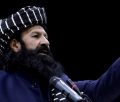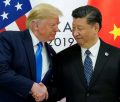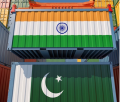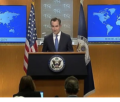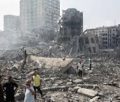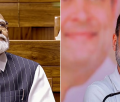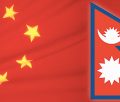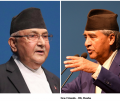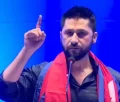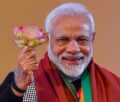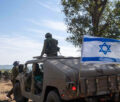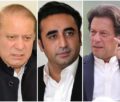Mirror to Stalin’s Terror

 Stalin’s Terror of 1937-1938: Political Genocide in the USSR, by Vadim Rogovin
Stalin’s Terror of 1937-1938: Political Genocide in the USSR, by Vadim Rogovin
By Andrea Peters wsws.org
The late Marxist historian and sociologist Vadim Rogovin ‘s book presents a compelling and uncompromisingly political interpretation of the the Stalin had unleashed in 937-38
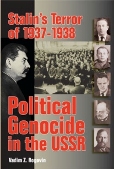 Stalin’s aim, the author insists, was to eliminate all traces of the substantial Marxist-inspired socialist opposition to his bureaucratic regime. Moreover, Stalin’s fixation on Trotsky was not, Rogovin maintains, an incidental phenomenon that served little more than propaganda purposes. Rather, Stalin perceived the exiled Trotsky as the most significant threat to his dictatorship. He was the personification of a revolutionary program and tradition that the bureaucratic regime was determined to extirpate.
Stalin’s aim, the author insists, was to eliminate all traces of the substantial Marxist-inspired socialist opposition to his bureaucratic regime. Moreover, Stalin’s fixation on Trotsky was not, Rogovin maintains, an incidental phenomenon that served little more than propaganda purposes. Rather, Stalin perceived the exiled Trotsky as the most significant threat to his dictatorship. He was the personification of a revolutionary program and tradition that the bureaucratic regime was determined to extirpate.
The living Trotsky, his active supporters around the world, and, however silent and repressed, his countless sympathizers within the Soviet Union constituted an opposition that Stalin found impossible to ignore. As Rogovin demonstrates, Stalin carried out the physical destruction of not only the Bolshevik Party, but all those layers of Soviet society that had any attachment to the socialist traditions of the Russian Revolution.
Stalin’s Terror of 1937-38: Political Genocide in the USSR is the fifth volume in a seven-volume cycle that Vadim Rogovin wrote between 1990 and his death in 1998 at the age of 61. Rogovin’s study of the Marxist opposition to the Stalinist betrayal of the October Revolution and its tragic fate is the extraordinary achievement of a man who may rightfully be judged the greatest Soviet historian of the post-Stalin era.
Rogovin’s place in Soviet historiography is all the more remarkable given the fact that his work as a historian began only during the last decade of his life. A doctor of philosophical sciences, from the late 1970s until his death in 1998 Rogovin held a position at the Institute of Sociology of the Russian Academy of Sciences in Moscow, where he was a prolific researcher and writer. His work at the institute focused on what was known in Soviet parlance as the “distribution problem”—i.e., social inequality—and its implications for social justice, labor productivity, and social morality in Soviet society.
Having worked earlier in the field of aesthetics and literary criticism, Rogovin turned to sociology to investigate, to the extent possible under conditions of police surveillance and censorship, the allocation of wealth and privileges in the Soviet Union. This interest grew out of political conclusions he drew in the aftermath of Nikita Khrushchev’s 1956 exposure of Stalin’s crimes at the 20th Congress of the Soviet Communist Party.
Khrushchev’s speech marked the beginning of a short-lived “thaw” that inspired an awakening for countless intellectuals and artists of Rogovin’s generation. Rogovin, whose grandfather was a victim of the purges, had never believed the official Soviet version of history that portrayed virtually all of Lenin’s comrades in the leadership of the October Revolution, with the exception of Stalin, as traitors.
Taking advantage of the relatively more open climate of Khrushchev’s thaw, Rogovin began searching for the real causes of the purges of the 1930s. He managed to gain access to some of the writings of the Left Opposition that had been published during the debates of the 1920s.
He also noted a relationship between Stalin’s repression and the growth of social inequality in the USSR. This relationship, Rogovin concluded, was essential to understanding the nature of the Stalinist regime. Based on a study of historical documents, Rogovin came to view the Left Opposition, which emerged in 1923 under the leadership of Trotsky, as a socialist alternative to the anti-egalitarianism of Stalin’s bureaucratic regime.
Khrushchev’s ouster from power in October 1964 ended the thaw. The highly restrictive political and cultural climate of the Brezhnev era made Rogovin’s investigation of these questions more difficult. While principally occupied with his sociological work, he continued his private study of Soviet history. But after Gorbachev’s accession to power in 1985 and the beginning of glasnost’ it became possible to speak and to write openly about Trotsky.
Rogovin began systematic work on the study of the Left Opposition, making use of long-suppressed documents that had become available. As he neared completion of his first volume, Rogovin came into contact with the International Committee of the Fourth International, with which he maintained an extremely close dialog and political relationship until his death in 1998.
Rogovin wrote his series when the collapse of the Soviet Union was resulting in a new wave of falsifications of Soviet history. Many of the publications about Stalin’s crimes that emerged in the USSR beginning in the late 1980s contained new distortions of the historical record and spurred the growth of a variety of reactionary political outlooks.
One of the forms this took, which was particularly dominant within the intelligentsia, was anti-Marxism. Stalinism was equated with Bolshevism and the crimes of the former portrayed as the inevitable consequence of the latter. Another form this took was virulent nationalism. Many justified Stalin as the defender of the Great Russian nation and blamed the devastation of the country on the agenda of those hostile to the Great Russian people.
Rogovin was a conscious opponent of both of these perspectives, which gained him admirers both domestically and internationally. However, his defense of Trotsky and his critical attitude towards the restoration of capitalism in the Soviet Union led to his effective ex-communication from the discipline of sociology. In all the various writings that have been published in the former USSR about the history of Soviet sociology over the past 15 years, not a single one contains a mention of Rogovin’s contributions.
Political Genocide in the USSR continues where the fourth volume in Rogovin’s series, 1937: Stalin’s Year of Terror, leaves off. It interweaves historical accounts and a variety of archival material to provide a compelling portrait of the third Moscow Trial. It also assesses the impact of the purges on different segments of the population, and recounts the campaign waged internationally by Stalin against Trotsky and the Left Opposition during those years. The book, which has been excellently translated by Frederick S. Choate, contains many valuable photographs, including several of Left oppositionists who have otherwise been erased from Soviet history.
The third Moscow Trial, which took place in March 1938, was the final in a series of open trials that prosecuted principal figures within the Bolshevik Party and other leading members of the Soviet regime. It was directed against the alleged crimes committed by the so-called “Right-Trotskyist bloc.” On the defendants’ bench were former Politburo members and Right Oppositionists Nikolai Bukharin and Alexei Rykov, former Left Oppositionists Nikolai Krestinsky, Arkady Rozengolts and Khristian Rakovsky, a group of Kremlin physicians accused of medical murders, and several others who held top positions in the state apparatus. Rogovin discusses the different purposes of the trials.
In contrast to the previous two Moscow Trials, during the third Moscow Trial the alleged starting date of the Right-Trotskyist conspiracies was pushed back to as early as 1918. Thus, the supposed conspiracy against the Soviet people masterminded by Trotsky in alliance with agents from the West had been in existence since the very first days after the Revolution. Stalin, in exposing all of this, thus appeared as the rescuer of the Soviet people from the clutches of these criminals.
Rogovin writes:
According to the material of the trial, the VKP(b) [the Communist Party], the government, the Comintern, the Red Army and the GPU had all been headed for many years by conscious scoundrels, masked adherents of capitalism and fascism, venal hirelings of bourgeois intelligence services, provocateurs of the Tsarist secret police, and so forth. Insofar as the profile of a political party is defined by its leaders and ideologists, then the Bolshevik Party was a kind of cesspool in which, from the moment it was founded, people wallowed who were capable of the most heinous crimes (p. 109).
One of the aims of the trial was to blame the enormous hardships suffered by the population over the course of the previous years—in particular, those that resulted from Stalin’s brutal forced collectivization and rapid industrialization drives—on sabotage to the Soviet economy carried out by this far-reaching Right-Trotskyist conspiracy, supposedly at the behest of the German, Japanese, Polish, and English governments.
Rogovin notes:
After the last capitalist class, the kulaks, had been liquidated in the USSR, it became impossible to explain the burdens and deprivations endured by the people by referring to the intrigues of hostile class forces.… However, the majority of the population in their everyday activity by no means felt “life has become better, life has become more joyful,” as was incessantly repeated by official propaganda. Therefore, what was demanded was the shifting of the blame for a “slowdown” in the betterment of the people’s welfare onto arch-villains and conspirators who were consciously destroying the fruits of the labor of the Soviet people…. (p. 83).
Rogovin points out, however, that despite the regime’s intention to use the Moscow Trials for very definite political ends, when examined closely, some of the trial testimony actually revealed certain unpleasant truths about conditions in the country. He documents some of the damning commentary made by defendants in their statements before the court.
One of the doctors accused of various political murders, for example, “announced that Yagoda had once told him: ‘the dissatisfaction with Stalin’s leadership is growing throughout the land,’ and ‘there is hardly a single major establishment which does not have people sitting there who are dissatisfied with this leadership and who feel that it is necessary to remove it and replace it with other people’” (p. 76).
Other defendants refused to corroborate the charges against them, despite having conceded to them in pre-trial torture sessions. Paying special attention to the performances of Bukharin, Krestinsky and Rakovsky, Rogovin explains how these individuals created difficulties for prosecutor Andrei Vyshinsky by not adhering to the script they were supposed to follow, making comments that undermined the charges leveled against them or attempting in some way to defend themselves.
After examining their testimony, and the psychological and political considerations that drove their behavior, Rogovin documents their ultimate capitulation. This material is both fascinating and painful, for it bears witness to the political and psychological shattering of individuals, many of whom were once great revolutionaries. For example, Rogovin recounts Rakovsky’s final statement to the court.
[He] spoke of his personal friendship with Trotsky which had spanned 34 years and lamented to the court only that the prosecutor’s demand to deprive him of his freedom for 25 years did not correspond to the ‘physiological limitations of the defendant who stands before you” (p. 101).
All those accused at the trial were found guilty and immediately shot, with the exception of three defendants who received decades-long prison sentences. In 1941, they too were executed.
Rogovin explains that despite the fact that Leon Trotsky was thousands of miles from the courtroom, he was “the main defendant.” His name was vilified hundreds of times “in the questioning of the defendants, in the indictment speech, in Vyshinsky’s speech, and in the court’s sentence” (p. 79).
“Many aspects of the third trial can be correctly understood,” argues Rogovin, “only if one considers that the trial itself was part of a ruthless political struggle in which Stalin was continuously receiving devastating ideological blows from Trotsky” (p. 79).
Here, as well as in other sections of the book, Rogovin examines Trotsky’s systematic exposure of the charges made against him and the other defendants, noting that Stalin’s response to each exposure was to concoct a new set of even more monstrous lies.
Rogovin goes on to underscore Trotsky’s observation that the Moscow Trials were part of the process by which the bureaucratic apparatus, having become increasingly divorced from the social conquests of the Russian Revolution, concentrated ever greater power in its own hands. The further removed Stalin’s dictatorship grew from the aims of October 1917, the more reliant it became on organized terror, false accusations and judicial frame-ups to defend its own position.
Developing a point initially made by Trotsky many decades ago, Rogovin argues that the third Moscow Trial created a debased intellectual atmosphere in which “‘slander, baseness, denunciation and cowardliness’” came to dominate (p. 117). He insists that the cultural and moral damage done to Soviet society as a result were never overcome. This fact is essential to understanding the nature of life in the country in the post-war period.
The attention that Rogovin gives to Trotsky’s assessment of the Moscow Trials and his role in these events is of critical importance. First, as was already noted, the political aims of the Terror—in particular, the stamping out any and all socialist opposition to Stalin’s rule—are often denied, ignored or downplayed by much Western Sovietology written on the subject. Second, to this day little to nothing is known within the broader population of the former Soviet Union about Trotsky (who, unlike all other leading Bolsheviks who had been repressed, was never rehabilitated by the Communist Party) and the grossly fabricated character of the charges made against him.
In addition to covering the events of the third Moscow Trial, Stalin’s Terror of 1937-1938: Political Genocide in the USSR goes on to document how the purges hit every layer of the ruling elite and Soviet society as a whole. Over the course of a number of chapters, Rogovin details the fate of the Politburo, the Central Committee (CC), the military, the secret police, the Komsomol (the youth organization of the Community Party), the intelligentsia, the Communist International (Comintern), and broader sections of the population.
The first chapters of the book deal with what were known as “mass operations.” In 1937, the June Plenum of the Central Committee gave the NKVD special powers so that it could carry out a Politburo decision to target “anti-Soviet elements,” starting in July of that year. Kulaks returning from exile imposed during forced collectivization, all those affiliated with “hostile” political formations, and criminals were targeted for arrest and execution.
A vast extermination campaign resulted that swept up layers of the peasantry, many with direct and indirect ties to the socialist movement, key segments of the industrial working class, and entire ethnic groups—Koreans, Latvians, Poles, Finns, Estonians, Greeks, Iranians and many others. This genocidal policy, which was both political and ethnic in character, victimized upwards of 400,000 people over the course of a single year. Rogovin notes that that “the reprisals were especially ferocious against communists who belonged to the given nationalities” (p. 10).
The beheading of Soviet society extended into all layers of the ruling elite. In recounting the fate of the Central Committee of the Bolshevik Party, Rogovin reports, for example: “From the 1,996 delegates to the 17th Congress of the VKP(b) [the Communist Party] with deciding or advisory votes … 1,108 were arrested, of whom 848 were shot” (p. 190).
The army fared no better. “As a result of the pre-war repressions the Red Army lost more military leaders of high rank than during all the years of the Second World War,” Rogovin writes (p. 199). The secret police and the Komsomol were also victimized. Stalin paid special attention to the purging of the latter because of his concerns that revolutionary youth would be particularly receptive to oppositional sentiments and thus posed a particular threat to his rule.
Rogovin documents how Stalin and a close group of associates from the Politburo, namely Molotov, Kaganovich, Voroshilov and Yezhov, oversaw the purges. The author presents extensive archival evidence and supporting material from the 20th Communist Party Congress detailing the central role that Stalin and these figures had in approving party expulsions, arrests and executions. These sections are particularly important because this documentary record counters claims made by the revisionist school of Sovietology which, in varying ways, questioned and/or rejected the argument that the Great Purge was personally directed by Stalin and expressed his political will.
For example, Rogovin documents how Stalin and other Politburo members prepared and approved lists of individuals to be repressed. Regular reports, which requested the go-ahead for arrests and executions, were sent from Yezhov to Stalin and his close associates. These reports also contained accounts of the course of ongoing investigations.
Rogovin writes:
On such documents Stalin, Molotov and Kaganovich left instructions of the following kind: “Beat, and beat some more.” When he received the testimony of the Old Bolshevik Beloborodov, Stalin sent the papers back to Yezhov with the instructions: “Isn’t it time to put pressure on this gentleman and force him to tell of his filthy deed? After all, where is he: in prison or in a hotel?” (p. 131).
Giving the reader a sense of the scale of the physical destruction perpetrated by these individuals, Rogovin informs us, “Eleven volumes of the lists, confirmed by members of the highest echelons of the party and state leadership, contain the names of 38,848 communists sentenced to be shot, and 5,449 sentenced to terms in prisons and camps” (p. 131).
Rogovin pays particular attention to the crimes committed by Vyacheslav Molotov, whose brutality was widely known and who defended all of his actions until his very last day (he lived until 1986). In particular, Rogovin directs the reader’s attention to the political explanation that Molotov gave for his and Stalin’s actions. “Stalin, in my opinion, pursued a very correct line: let an extra head fly off someone’s shoulders, but let there by no vacillation during the war or after,” Rogovin quotes Molotov as saying (p. 141).
Rogovin writes:
It follows from Molotov’s words that the main motive for the mass terror was the fear of the ruling clique over the possible activation of oppositional forces during the war. Endlessly repeating that if there had not been a purge, then “arguments might have continued” in the leadership of the party, Molotov declared that the very presence of such debates was dangerous and unwanted (p. 141).
Rogovin points out Stalin’s murderous policies targeted the very bureaucracy that he had built up. He argues that this expressed a “fundamental contradiction” in the consolidation of bureaucratic rule in the Soviet Union.
As soon as the repressions against [the bureaucracy’s] recent comrades aroused confusion and protest among even the Stalinist-inclined section of the apparatus, Stalin made the decision to liquidate the entire ruling stratum in the form in which it had developed by 1937, and to replace it with a new generation of people without a revolutionary past, without links to the tradition of Bolshevism. Hence arose the fundamental contradiction of the Great Purge: almost all the former representatives of the ruling layer were exterminated, but the positions of this very layer, which became politically homogenous and fully subordinated to the will of the “leader,” became reinforced (pp. 189-90).
Rogovin pays a particular amount of attention to the question of the real moods and mass sentiments of the population. He argues that, in general, there was a great deal of confusion and “moral and psychological heterogeneity” in the response to the purges among the broader populace. Some of this stemmed from the fact that social layers with legitimate grievances and anger against ruling layers of the bureaucracy, such as a portion of the peasantry that had been brutalized during forced collectivization, thought they were witnessing the meting out of some form of justice for previous crimes. But he also notes that there was significant and conscious political opposition, in the first place from among Trotskyists, but also among other social layers who retained an allegiance to Bolshevik traditions.
Thus, he writes about the case of the well-known Soviet physicist L.D. Landau, whose investigatory dossier included an anti-Stalinist leaflet beginning with the words: “The great cause of the October Revolution has been foully betrayed. The nation is drowning in rivers of blood and filth.” It goes on to proclaim: “Socialism remains only on the pages of newspapers which tell nothing but lies” (p. 267).
The discussion of the fate of ordinary, rank-and file Trotskyist oppositionists is a particularly moving portion of the book. In the chapter “Oppositionists in the Camps,” we hear the story of Tatiana Miagkova, who, after spending years under arrest, was ultimately sentenced to death. She was executed because “while in prison camp, she systematically established contact with imprisoned Trotskyists; she maintained a hunger strike for six months; and she expressed counter-revolutionary defeatist ideas” (p. 278). Alongside the text there are two poignant pictures of Miagkova’s gentle face framed by blonde hair.
The later sections of the book address the impact of the Great Purge on the international communist movement, and, in particular, the brutal campaign against the Left Opposition throughout Europe.
Rogovin provides a political explanation for this assault on the Comintern and the international socialist movement. He maintains that Stalin was driven by a need to protect the privileged position of the Soviet bureaucracy and its nationalist agenda against the interests of the international proletariat.
The ferocity of the persecution of the foreign communists was explained to a significant degree by Stalin’s fear that socialist revolutions in other lands might arise outside of his control. As a result, the center of the revolutionary movement might shift from Moscow, and the movement itself might end up under the leadership of the Fourth International” (p. 307).
The final chapters of the book deal with Stalin’s persecution of the Fourth International (FI), the movement founded and led by Trotsky in opposition to Stalin. Rogovin documents the assassination and/or suspicious death of leading figures within the FI, as well as others who defected from the Soviet Union in the late 1930s and established contact with the international Trotskyist movement. He discusses the tragic fate of Ignatii Reiss, Walter Krivitsky, Erwin Wolf, Rudolph Klement, and most famously, Leon Sedov, Trotsky’s son.
Rogovin devotes a significant amount of attention to some of the central political struggles that Trotsky waged at the time, in particular, his effort to simultaneously expose the counterrevolutionary policies of Stalin and defend the October Revolution against liberal critics.
Summarizing the socio-political consequences of the Terror, Rogovin writes:
The Great Purge was a gigantic redistribution of positions in the social structure of society and the regime. Such a redistribution was determined most of all by the fact that the arrest of any highly-placed person immediately resulted in the upward movement of not one, but several people.(…) As a result, the people promoted in 1937-1938 ended up in posts which could not have appeared in their dreams only a few years before. And, since most often they were young and politically inexperienced people who were not inclined to deep thoughts, they could not help but approve of everything which was taking place in the country; they sincerely praised Stalin, who had truly secured for them a better and more joyful life (p. 287).
Rogovin argues that this political genocide had lasting consequences, which are essential to understanding the ultimate dissolution of the USSR.
He writes: “Therefore, despite the radical nature of the social turn-about that occurred at the end of the 1980s and beginning of the 1990s, in order to carry it out there was no need to smash the state machinery and replenish the personnel of the entire state apparatus from top to bottom, as usually happens during such social cataclysms,” as this had already been accomplished decades prior (pp. 192-93).
Rogovin concludes the book with a final commentary about the distortion of Soviet history. He notes that these falsifications, along with the Great Purge itself, “profoundly deformed the social consciousness of the Soviet people, and drove millions of people away from the communist movement abroad.”
Stalin’s Terror of 1937-1938: Political Genocide in the USSR is the most powerful exposure of the political motives behind the purges to be written by a Russian since the epochal work of Trotsky more than 70 years ago.
-
Book Shelf
-
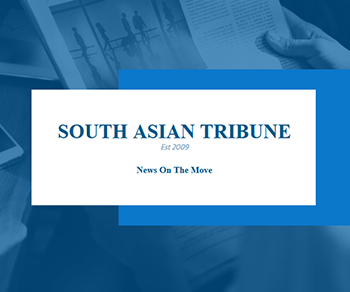 Book Review
DESTINY OF A DYSFUNCTIONAL NUCLEAR STATE
Book Review
DESTINY OF A DYSFUNCTIONAL NUCLEAR STATE
- Book ReviewChina FO Presser Where is the fountainhead of jihad?
- Book ReviewNews Pak Syndrome bedevils Indo-Bangla ties
- Book Review Understanding Vedic Equality….: Book Review
- Book Review Buddhism Made Easy: Book Review
- Book ReviewNews Elegant Summary Of Krishnamurti’s teachings
- Book Review Review: Perspectives: The Timeless Way of Wisdom
- Book ReviewNews Rituals too a world of Rhythm
- Book Review Marx After Marxism
- Book Review John Updike’s Terrorist – a review
-
-
Recent Top Post
- NewsTop Story Record Pentagon spending bill and America’s hidden nuclear rearmament
-
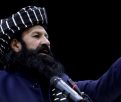 NewsTop Story
Taliban Suffers Devastating Blow With Killing Of Minister
NewsTop Story
Taliban Suffers Devastating Blow With Killing Of Minister
-
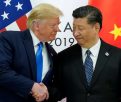 China NewsCommentaries
Reality Shadow over Sino-American ties
China NewsCommentaries
Reality Shadow over Sino-American ties
-
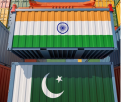 CommentariesNews
Ides of trade between India and Pakistan
CommentariesNews
Ides of trade between India and Pakistan
-
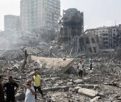 CommentariesTop Story
Palestinians at the cross- roads
CommentariesTop Story
Palestinians at the cross- roads
-
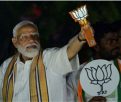 CommentariesTop Story
While Modi professes concern for the jobless, “his government’s budget escalates class war”
CommentariesTop Story
While Modi professes concern for the jobless, “his government’s budget escalates class war”
-
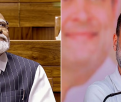 CommentariesNews
Politics of Mayhem: Narrative Slipping from Modi ….?
CommentariesNews
Politics of Mayhem: Narrative Slipping from Modi ….?
-
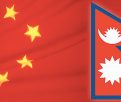 Commentaries
Impasse over BRI Projects in Nepal
Commentaries
Impasse over BRI Projects in Nepal
-
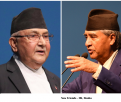 CommentariesNews
Yet another Musical Chairs in Kathmandu
CommentariesNews
Yet another Musical Chairs in Kathmandu
-
 CommentariesTop Story
Spurt in Anti-India Activities in Canada
CommentariesTop Story
Spurt in Anti-India Activities in Canada
AdSense code


